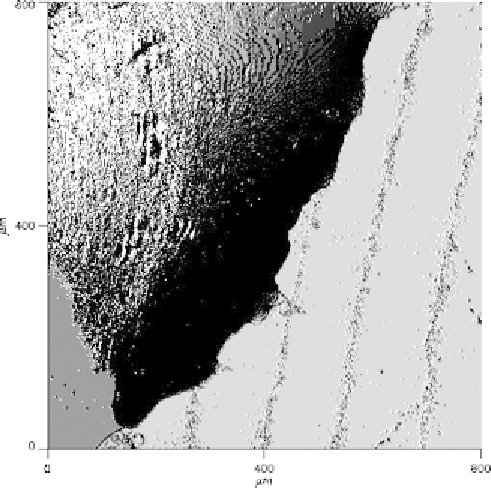Biomedical Engineering Reference
In-Depth Information
Figure 6.
Microscopic image of a water droplet on a steel surface [4].
this purpose, a thorough topographic characterisation of a surface to be evaluated
with respect to its wetting properties is absolutely essential.
1. Surface Roughness of Solids
Surfaces as physical entities possess many attributes, geometry being one of them.
Surface geometry of real materials by nature is three-dimensional and its detailed
features are termed topography. In engineering field, topography represents the
main external features of a surface which is determined by the description of its
morphology and topometry. In practice, the notion of a surface extends to sub-
layers of solid boundaries and the surface assumes certain internal features [5],
e.g., hardness, residual stress, deformation, chemical composition and reactions,
microstructure, capillary, hydrophobicity, that are often of foremost concern in an
application. Surface topography often interrelates with these features in compli-
cated manners and in three dimensions to define certain engineering properties.
Surface topography is, therefore, significant for surface performance and the impor-
tance of its measurement by means of functional analysis and prediction is obvious.
Engineering surfaces are produced in various ways, typically by machining,
surface treatment and coating. Surface topography modification is therefore per-
formed by material removal, transformation or addition. Combinations of various
machining, treatment and coating operations are employed to produce surfaces with
desired characteristics for a particular application. Surface topography, therefore,
contains 'signatures' of the surface generation process and as such can be used to

Search WWH ::

Custom Search